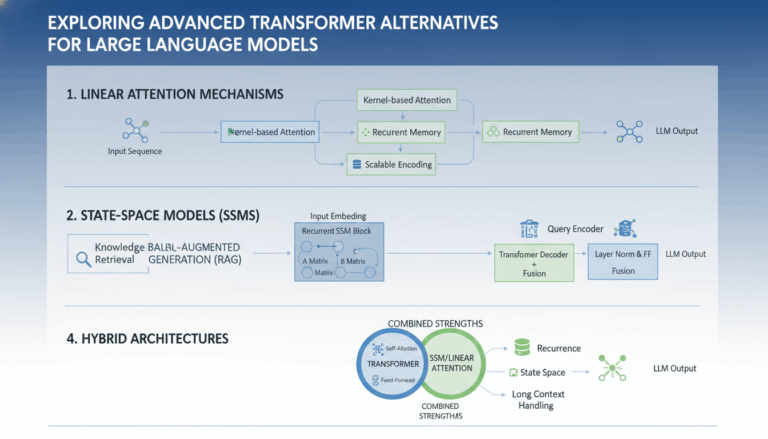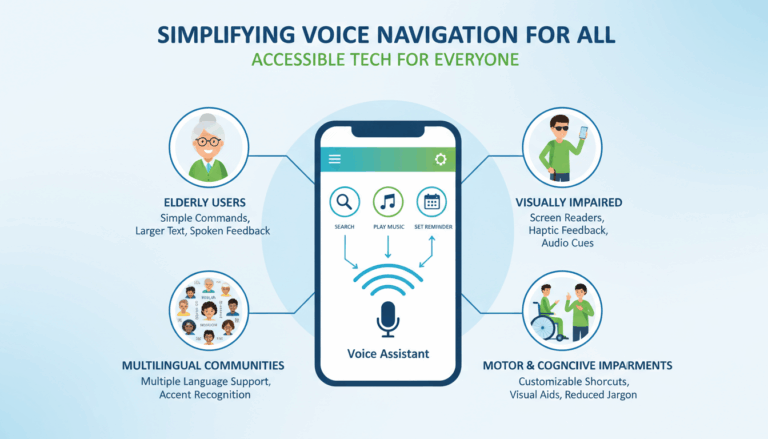Introduction to Graph Databases and Neo4j
In the evolving landscape of data management, graph databases have emerged as a robust solution to handle complex, interrelated data. Unlike traditional relational databases that rely on fixed tables and schema, graph databases focus on the relationships and connections between data points, effectively mimicking real-world networks and structures.
A graph database is constructed around a graph structure that comprises nodes, edges, and properties. Nodes represent entities such as people, businesses, or other items, and each node can have multiple attributes or properties like a name or age. Edges define the connections or relationships between these nodes, and they too can have properties. For instance, in a database tracking social media interactions, nodes could represent users, and an edge might show that “User A follows User B,” with properties indicating when the follow occurred.
This architectural construct provides a natural way to model intricate datasets where understanding how the data points interconnect is as critical as the data itself. Graph databases shine in scenarios involving social networks, recommendation engines, fraud detection, or any domain where the connections between datasets suggest significant insights.
Neo4j, a prominent figure in the world of graph databases, has become a leader due to its robust open-source nature and enterprise-ready features. As the first graph database to be ACID-compliant, Neo4j ensures data integrity and reliability even in massively connected data environments. It extends its utility through a declarative query language called Cypher, designed specifically for queries on the graph model. Cypher allows users to express complex database queries in a readable way, facilitating easy retrieval and analysis of data without exhaustive command-line gymnastics.
Consider a real-world application where a retail business wants to analyze purchasing patterns. In a traditional relational database, the connections between customers and products would be represented across multiple, potentially cumbersome tables. By contrast, with Neo4j, you can visualize this as a graph with customers linked directly to the products they have bought, easily surfacing patterns like “customers who bought X also bought Y.” This direct approach not only speeds up querying but also exposes relationships that might be cumbersome to uncover with SQL.
Adopting Neo4j can fundamentally alter how organizations approach data analysis and structural design. It requires a shift in mindset from rows and columns to nodes and connections, but this change brings a more capable and intuitive way to handle prolific data relationships, directly impacting decision-making and strategic planning. As data continues to grow both in size and complexity, understanding and utilizing graphs becomes increasingly essential. Neo4j, by empowering users to visualize and query these relationships intuitively, frees businesses from the constraints of traditional databases, unlocking new potentials in data-driven insights.
Limitations of Traditional Relational Databases
Traditional relational databases, based on a tabular paradigm, organize data in rows and columns across multiple tables. These databases excel at managing structured data with a fixed schema, maintaining robust ACID compliance, transaction management, and ensuring data integrity. However, as data complexity and interconnectivity increase, this model has inherent limitations that can impact efficiency, flexibility, and scalability.
Relational databases operate under the requirement of predefined schemas, which dictate how data is stored and accessed. This rigidity can become a drawback in dynamic environments where data models evolve rapidly. Altering a schema in a relational database often necessitates significant downtime to adjust tables and relationships, an expensive and time-consuming process. This is particularly challenging when handling unstructured or semi-structured data, which requires more flexible schema management.
Handling complex relationships is another area where relational databases struggle. When datasets are highly connected, such as in social networks or recommendation systems, relational databases require extensive use of JOIN operations across multiple tables. These JOIN operations not only complicate query writing but also degrade performance as the datasets grow, resulting in sluggish query response times.
For instance, consider the social media platform scenario: representing the intricate web of friendships and interactions in a relational model would involve numerous tables and complex JOIN queries to analyze relationships like mutual friends or degrees of separation. This creates performance bottlenecks and complicates data retrieval, particularly when scaling to millions of users and billions of connections.
Moreover, relational databases face challenges with horizontal scalability. Designed primarily for vertical scaling, their architecture supports increasing resources such as CPU and memory on a single server to handle higher loads. However, this approach can become cost-prohibitive and limits scaling beyond a certain point. Distributed relational systems exist but often involve complex setups and can lead to consistency challenges.
In addition, the need for data sharding—splitting large databases into smaller, manageable pieces—further complicates matters. Sharding typically requires custom logic at the application level and can lead to uneven data distribution, making certain queries inefficient.
The limitations of traditional relational databases become starkly apparent as organizations face the demands of big data and complex relational datasets. This drives the need for more flexible systems like graph databases, which naturally accommodate dynamic schemas and intricate relationship mapping more efficiently. Understanding these limitations is crucial for organizations as they strategize to leverage data more effectively in a rapidly evolving technological landscape.
Key Features and Advantages of Neo4j
Neo4j stands out in the realm of graph databases for its ability to seamlessly handle the complexity and dynamism of interconnected data, offering a range of features that set it apart.
At the core, Neo4j utilizes a property graph model where data is represented through nodes, relationships, and properties. This model excels at illustrating how data points relate to one another, mirroring real-world structures where entities are interconnected in various ways. This approach is inherently more flexible than the rigid schemas of traditional databases, allowing dynamic schema evolution which is especially beneficial in environments where data models change frequently.
One of the main advantages of Neo4j is its powerful query language, Cypher. Cypher is designed to express complex graph queries in an intuitive and human-readable format. A query written in Cypher is much like describing a pattern one is seeking within a dataset. For example, a user can easily construct queries to find the shortest path between two nodes or to detect fraud patterns within financial transactions, showcasing how natural and succinct querying can be.
Furthermore, Neo4j provides high-performance graph traversal. Unlike traditional databases where JOIN operations can bog down performance, Neo4j is optimized for graph queries which naturally require traversing through nodes and edges. This performance optimization becomes crucial in large datasets like social networks, where Neo4j can efficiently handle thousands of connections per second, surfacing insights in real-time.
The flexibility of Neo4j in handling diverse and complex datasets is exemplified in recommendation systems. Consider an e-commerce platform that leverages Neo4j to suggest products. Here, Neo4j allows the seamless integration of various datasets, such as user preferences, purchase history, and product interrelations, to generate accurate recommendations. This capability stems from the database’s ability to instantly assess multiple relationship dimensions, delivering insights that drive consumer engagement and sales.
Neo4j also introduces features for real-time data processing. The database can be integrated with stream processing engines like Apache Kafka, enabling it to process and react to data changes instantly. Such real-time capabilities are indispensable in applications like fraud detection in banking, where immediate reaction to anomalies is critical.
In terms of scalability, Neo4j Enterprise Edition provides robust solutions to scale graph databases horizontally. This edition supports clustering, allowing databases to be distributed across multiple servers, thereby enhancing performance and availability. Such scalability is crucial for businesses dealing with massive datasets, ensuring that Neo4j can grow alongside burgeoning data demands without sacrificing responsiveness.
Additionally, Neo4j’s ACID compliance ensures that transactions are processed reliably, with safeguards for data integrity even when scaling horizontally. The atomicity of transactions means that each graph operation is completed wholly or not at all, preserving the database’s stable state and preventing data corruption.
Neo4j also seamlessly integrates with other data sources through its support for various data import and export capabilities. It includes native support for JSON and CSV files, alongside integrations with other databases via ETL tools. This kind of interoperability makes it easy to transfer data into and out of Neo4j, allowing it to synergize with existing data infrastructures.
A crucial component of Neo4j’s advantage is its vibrant community and comprehensive documentation, which facilitates ease of learning and troubleshooting. This community-driven support, coupled with extensive educational resources, empowers developers to leverage Neo4j effectively, reducing the learning curve and fostering innovation.
Overall, the array of features Neo4j offers, from Cypher to real-time processing capabilities and scalability, makes it a pivotal tool for industries that rely on understanding complex data relationships. Whether in enhancing user experiences through recommendations or ensuring robust transaction integrity, Neo4j stands as a versatile and robust solution in the graph database landscape.
Setting Up and Navigating the Neo4j Environment
To fully harness the capabilities of Neo4j, setting up and navigating its environment is a crucial step. This process begins with installing the Neo4j database on your system. Neo4j can be deployed locally or on cloud platforms like AWS, Azure, and Google Cloud. Here, a step-by-step guide is provided to facilitate the local installation on various systems.
Installing Neo4j Locally
-
Download Neo4j: Visit the Neo4j download page and select your operating system. Neo4j is available for Windows, macOS, and Linux.
-
Installation on Windows:
– Run the downloaded installer.
– Follow the prompts in the installation wizard.
– Ensure you install the Neo4j desktop, which simplifies managing multiple graph databases. -
Installation on macOS:
– You can use Homebrew for a streamlined installation:bash brew install --cask neo4j– Alternatively, use the DMG installer from the official website and drag the Neo4j icon to the Applications folder.
-
Installation on Linux:
– Use the DEB or RPM packages provided by Neo4j:- For Debian-based systems:
bash wget -O - https://debian.neo4j.com/neotechnology.gpg.key | sudo apt-key add - echo 'deb https://debian.neo4j.com stable 4.0' | sudo tee /etc/apt/sources.list.d/neo4j.list sudo apt-get update sudo apt-get install neo4j - For RPM-based distros:
bash rpm --import https://debian.neo4j.com/neotechnology.gpg.key yum install neo4j
- For Debian-based systems:
Initial Setup
Once installed, you need to set up your Neo4j database environment:
-
Starting the Database:
– Open the Neo4j Desktop on your computer.
– Click ‘New Project’ to create a container for your databases.
– Add a new database and click the ‘Start’ button to initialize it. -
Accessing Neo4j Browser:
– With the database running, open a web browser and enterhttp://localhost:7474to access the Neo4j Browser, which serves as both an interface to run Cypher queries and a way to visualize results.
– The default login credentials areneo4jfor both username and password. You will be prompted to change the password on first login for security purposes.
Navigating the Neo4j Environment
-
Neo4j Desktop Interface:
– This tool allows you to manage different Neo4j databases from one interface. It provides access to logs, configurations, and monitoring capabilities.
– You can download plugins and extensions directly from the desktop to extend the functionality of your databases. -
Using the Neo4j Browser:
– The browser is your primary tool for interacting with the database. It features a command line interface where you input Cypher queries and see both graph visualizations and tabular data results.
– Use the guide pane to access tutorials on Cypher, data models, and other Neo4j features directly within the browser. -
Cypher Query Language:
– The browser includes autocomplete and query introspection features to ease writing Cypher queries.
– Try simple queries such asMATCH (n) RETURN nto retrieve all nodes or explore more complex joins and filtering operations. -
Database Management:
– Access settings directly from the browser or desktop interface to manage nodes, relationships, and indices efficiently.
– Utilize the import/export functionality for data migration, employing CSV files and other supported formats to populate your graph database.
By setting up Neo4j correctly and familiarizing yourself with its flexible and powerful interface tools, you can leverage its full potential to explore complex data relationships effectively. These capabilities underscore the inherent advantages of graph databases compared to their traditional counterparts, positioning you to derive insightful analytics and advanced data solutions.
Modeling Data with Neo4j: Nodes, Relationships, and Properties
In Neo4j, modeling data is an intuitive and dynamic process, thanks to its graph-based architecture. The core components of this model are nodes, relationships, and properties, each of which plays a fundamental role in representing interconnected data.
To understand nodes, consider them as the primary data entities. For instance, in a social networking application, each user can be represented as a node. Nodes can symbolize a variety of objects, such as people, locations, products, or any identifiable thing. Each node can hold various properties or attributes, much like fields in a database table, which provide detailed information about the object. For example, a user node might have properties like name, age, email, and registration date.
Relationships in Neo4j are equally crucial, as they define how nodes are interconnected. Unlike traditional databases that struggle with complex JOIN operations, Neo4j excels by making relationships first-class citizens. In our social network scenario, relationships could represent actions like “FRIEND”, “LIKES”, or “WORKS_WITH.” Relationships have directional meaning, although they can be queried easily in both directions. This directionality helps model the nuanced interactions between entities, such as “User A is a friend of User B,” where the relationship may also carry properties like the date on which the friendship was established or the intensity of the interaction rated from 1 to 10.
Properties are attached to both nodes and relationships, allowing rich metadata to describe the data point or connection more comprehensively. Properties are stored in key-value pairs, where the key is the attribute name and the value is the attribute’s detail. These properties enable a more detailed and informative representation of the data. Consider an e-commerce graph where product nodes have properties such as price, brand, and stock level, and are connected to category nodes via relationships with properties like seasonality or discount trends.
This model allows for versatile and scalable data representation. For example, in a fraud detection system within a banking network, transactions can be modeled as relationships between nodes representing accounts. Each transaction relationship might carry properties indicating the transaction amount, date, and location, providing critical data points for detecting anomalies and patterns.
When leveraging Cypher, Neo4j’s query language, data can be easily queried and manipulated using recognizable patterns that mirror the graph’s structure. For instance, identifying friends of friends in a network, or finding all transactions over a certain amount in fraud detection, can be expressed as simple, intuitive queries.
Beyond query simplicity, this model’s natural alignment with how data is constructed flows into efficient data updates and evolution. Adding new types of nodes, relationships, or properties doesn’t require a schema alteration; instead, they become an organic extension of the graph. This flexibility makes Neo4j particularly powerful in environments with rapidly changing requirements, enabling organizations to adapt databases dynamically in response to evolving data landscapes.
By utilizing nodes, relationships, and properties in Neo4j, developers can create precise and meaningful data models that facilitate powerful insights, helping organizations increasingly leverage complex datasets for more strategic decision-making.
Querying Data Using Cypher: Neo4j’s Query Language
Cypher, Neo4j’s declarative query language, is tailored specifically for graph data and provides a unique and intuitive way to work with the rich and intricate connections inherent in graph databases. Cypher’s syntax allows users to perform complex queries involving pattern matching, graph traversals, and data manipulations in a straightforward and readable manner. This capability is a central feature of Neo4j, enabling users to unlock the potential of their connected data.
Cypher’s syntax is both familiar to those versed in traditional query languages like SQL and innovative in its graph-centric operation. The heart of Cypher queries is its pattern matching capability, where queries are constructed to describe the graphical patterns being sought. This is accomplished using a visual metaphor that resembles ASCII art to represent nodes and relationships, making it intuitive to query data models.
Imagine a scenario where you need to retrieve all friends of a user named ‘Alice.’ In SQL, this could involve multiple complex JOIN operations across several tables. With Cypher, this operation might look like:
MATCH (a:Person {name: 'Alice'})-[:FRIEND]->(friend)
RETURN friend
In this Cypher query, MATCH is used to specify the pattern to look for: a node labeled Person with the name ‘Alice’ connected via a FRIEND relationship to another node, which is returned as friend. This straightforward depiction makes Cypher highly accessible and its queries often self-explanatory.
Cypher also supports a variety of other operations, such as creating, updating, and deleting both nodes and relationships. To add a new relationship, for instance, you could use:
MATCH (a:Person {name: 'Alice'}), (b:Person {name: 'Bob'})
CREATE (a)-[:FRIEND]->(b)
This pattern creates a FRIEND relationship between two existing person nodes, Alice and Bob. The syntax is concise but powerful, allowing database modifications and complex transactions with minimal code.
Analytical capabilities of Cypher are enhanced with the ability to aggregate data, filter results, and apply transformations. For example, finding the number of direct friends of ‘Alice’ can be efficiently executed:
MATCH (a:Person {name: 'Alice'})-[:FRIEND]->(f)
RETURN count(f) AS numberOfFriends
Moreover, Cypher includes support for more sophisticated queries, like finding the shortest path between two nodes, which is valuable in scenarios such as routing, network analysis, and recommendations:
MATCH (start:Person {name: 'Alice'}), (end:Person {name: 'Charlie'}),
path = shortestPath((start)-[*]-(end))
RETURN path
This command calculates the shortest path from ‘Alice’ to ‘Charlie,’ utilizing Neo4j’s efficient graph traversal capabilities to provide quick results, even across large datasets.
Additionally, Cypher’s flexibility extends to filtering with predicates and Boolean logic, allowing users to perform detailed slices of data retrieval. For instance, fetching friends of ‘Alice’ who live in ‘New York’ would be:
MATCH (a:Person {name: 'Alice'})-[:FRIEND]->(f)
WHERE f.city = 'New York'
RETURN f
Such queries illustrate the seamless blend of filtering conditions with pattern matching, showcasing Cypher’s power in graph data contexts.
Another noteworthy Cypher feature is support for complex data analysis through aggregation and grouping, making it ideal for analytical applications. Complex grouping operations or drilled-down metrics are effortlessly supported, as seen in:
MATCH (c:Company)<-[:WORKS_FOR]-(e:Employee)
RETURN c.name AS company, count(e) AS numberOfEmployees
ORDER BY numberOfEmployees DESC
Here, Cypher aggregates employee counts per company, demonstrating its ability to traverse relationships and aggregate data intuitively.
In summary, Cypher’s syntactic clarity and expressive power make it an essential tool for interacting with Neo4j’s graph data. Its intuitive pattern matching, coupled with rich data manipulation capabilities, allows for fast and efficient querying of complex networks, empowering users to leverage their interconnected datasets to uncover meaningful insights. Cypher’s design, reflecting the natural structure of graph data, establishes it as not only a versatile tool for developers but also an enabler of transformative data analysis for organizations.



